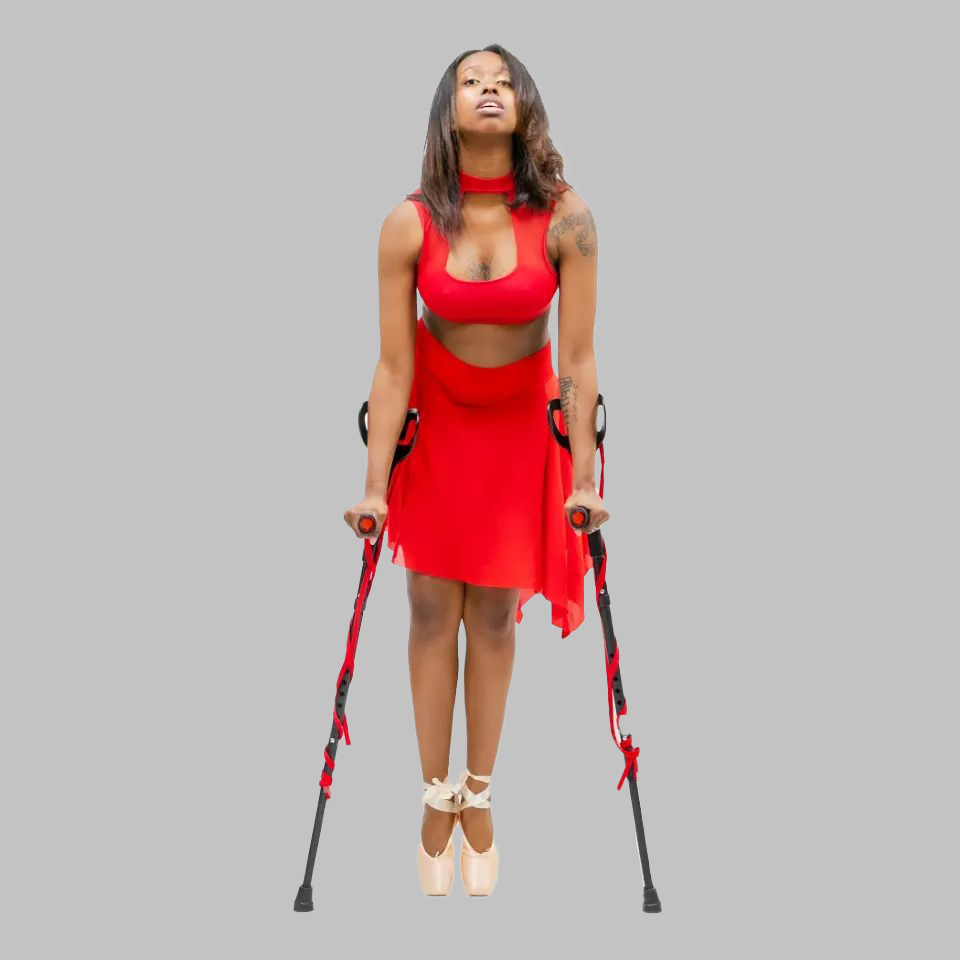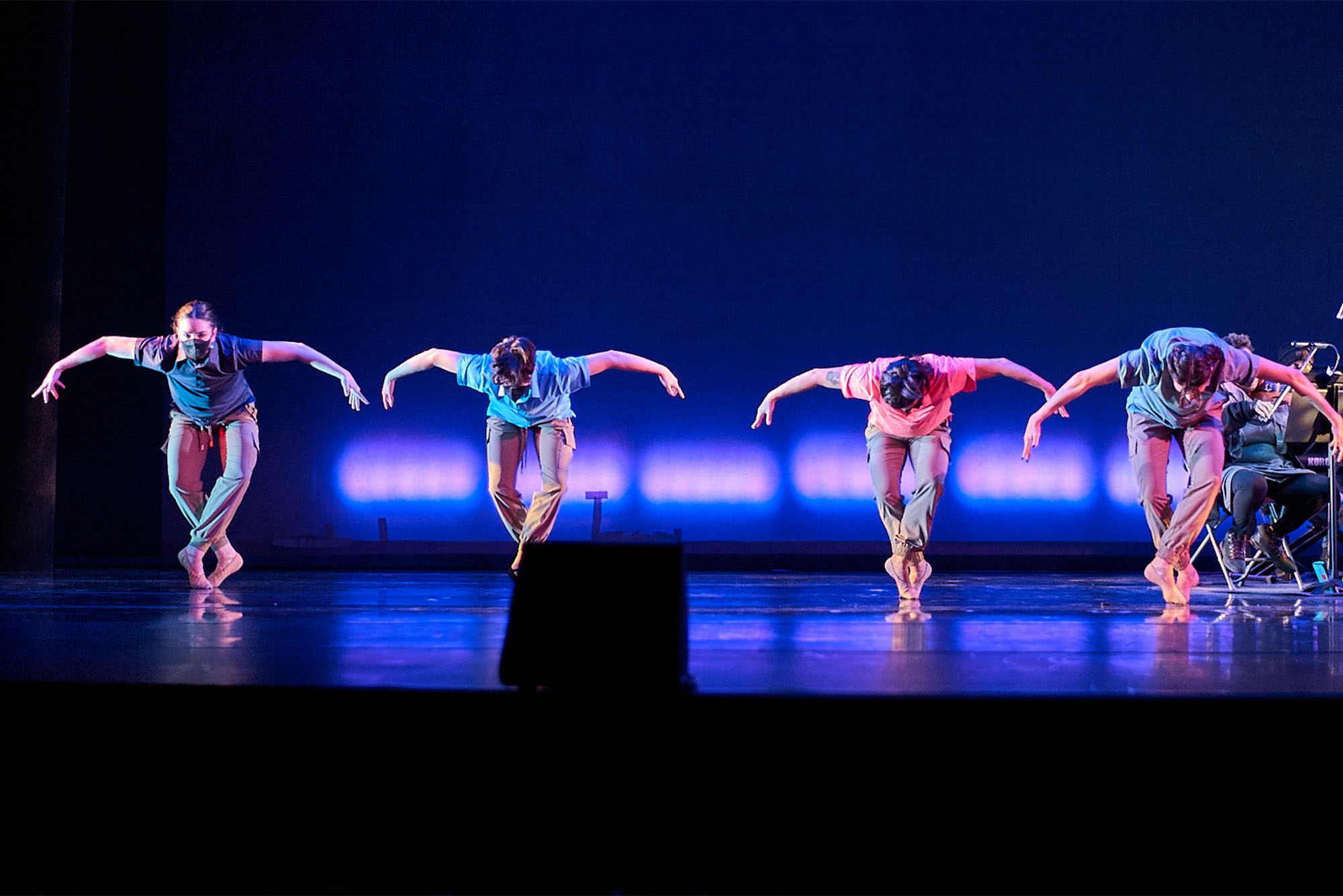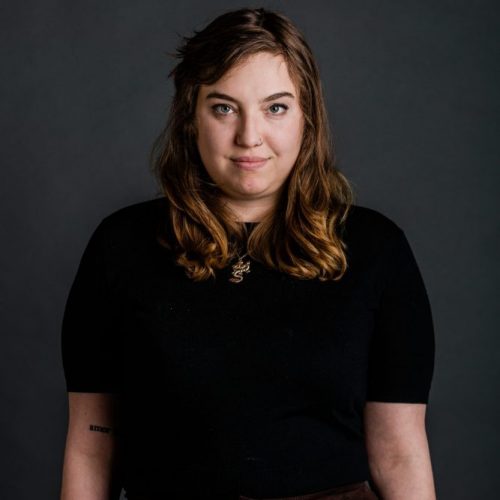Opening Doors: Ellice Patterson (Questrom’17)
Founder and executive director of Abilities Dance Boston

Ellice Patterson (Questrom’17),
Founder and executive director of Abilities Dance Boston
Patterson attended Questrom School of Business to learn more about how she could take her vision for an ability-inclusive dance company from concept to reality. Photo by Jaypix Photography
They are determined to use their experience, influence, and positions to help make their business, organization, and world more inclusive. They are breaking barriers—and then reaching back to help those behind them overcome the same hurdles. They are BU alumni, faculty, and staff—of every race, ethnicity, age, and gender—and they are “Opening Doors” for the next generation.
Ellice Patterson is a dancer. She’s also a choreographer, the head of a thriving nonprofit arts foundation, an advocate, an activist, an artist-in-residence with the city of Boston, a disabled person, a Mississippian, a businesswoman. But most important: a dancer.
In a life that could have been defined by what she wasn’t able to do, Patterson (Questrom’17) has seen nothing but possibility. She has been dancing since she was four years old. But after being excluded from major dance companies in the Boston area, Patterson—who uses a walker, crutches, and a wheelchair in performance—resolved to create an accessible space for dancers.
Her nonprofit Abilities Dance Boston maintains a roster of professional dancers, composers, and behind-the-scenes staff, living both with and without disabilities.
“Our performing company is all professional dancers, and everyone is getting paid for their work,” she says. “It’s also not recreational either; there’s a rigorous rehearsal and training process.”
Dancers are at the helm of every original performance, working collaboratively to design a production that centers on a social issue. November’s Banned Ballet was the story of a librarian grappling with aggressive book bans in her community before discovering an intriguing “magic book.” (It was a “keen, imaginative reminder” of “the magic of stories,” according to Dance Informa.)
“I wanted to be able to create a space for myself to move, but it has since grown into even more of a disability justice approach than I thought in the beginning,” Patterson says.

Since launching their first performance in 2017, the members of Abilities Dance have been at the forefront of local and national discourse on inclusion and accessibility in the arts. The conversations are about more than disability; they’re also about the prohibitive cost of fine arts performances for many residents. (Much of the company’s programming is free.)
Patterson’s role as a Boston artist-in-residence has elevated these discussions to a more visible level—exactly where she wants them. Abilities Dance is still young, and there’s lots of work to do to expand accessibility in the arts. But, she says, change is happening.
“I have had conversations with folks that have led to actionable change within their organizations or their communities, and seen the connections that folks are making artist-to-artist and artist-to-audience,” she says, “and I’ve seen this community develop and grow over time.”
Bostonia spoke to Patterson about her formative time at BU, accessibility, art, and her vision of a more equitable future.
Q&A
With Ellice Patterson
Bostonia: How did Questrom influence the foundation of Abilities Dance?
Patterson: Speaking with my classmates and running ideas back and forth was definitely formative in creating the basis of the work. The school encouraged me to go to a nonprofit incorporation workshop and to really learn and dive in. I did not know that I would pursue the nonprofit executive director/founder track; it just kind of evolved. At the time, I was consulting with different industries and learning how they operate, how to best add value, which encouraged me to research the nonprofit industry and arts sector, the disabled dance community, and ways of understanding all the elements of organization work—from incorporation to finance to fundraising. A lot of the process has just been me, learning as I went, researching and growing on my own. And then, as funds started to trickle in, I brought in more folks to work part-time, and eventually full-time.
Bostonia: How did you assemble your team—both onstage and behind-the-scenes—in the beginning?
Patterson: I had to learn the art of putting myself out there, having conversations, and developing relationships. It was all about developing relationships in the disabled dance community across the country, reaching out to folks through social media, admiring the work that they were doing, and wanting to be a part of it. The executive staff didn’t come together until the past couple of years, and until then it was just me forming and growing and developing. I found board members through a lot of cold-calling and cold-emailing and having folks be excited about the work that we were doing. We’ve also found people through open calls for dancers, musicians, and composers. One of those composers is now our director of music and full-time director of operations, which is exciting. We now have around 20 employees.
Bostonia: Tell us about the process of creating a show and how accessibility is built into that process.
Patterson: I do all the choreography for our productions. I collaborate with either our music director, Andrew [Choe], or whoever the composer is, and I work with the dancers to create the stories and the structure. I also want to let the dancers fill out that structure as needed, not just in terms of accommodations, but also in terms of their own artistic inclinations. The performances are narrated for the vision-impaired, which is an engaging and artistic way of showing what’s happening on this stage, and it’s really an integral part of the show, because it allows for storytelling in a way that would not happen with the dance itself. I want to normalize access within productions as much as possible so that more of our community can attend. We want to create space and continue to provide options, including live streaming as an access measure, unlimited free tickets as an access measure, and other elements that make the work happen.
Bostonia: You had a show in November that was all about banned books. Do all of your performances have a social lens?
Patterson: Yes—as a multiple-marginalized person, I don’t have the luxury of just performing for performance’s sake. Everything I put out has to have a deeper push towards liberation for all. There are multiple areas where we tie intersectionality to our performances. We closed a show in April that was highlighting BIPOC [Black, Indigenous, and people of color] and disabled artists and activists and linking their life stories to bills that are currently on the State House floor. As we were thinking of our concept [for Banned Ballet] for that year, the uptick in conversations around banning books was happening, and there were conversations about the impact that could be coming. We wanted to create this work now before we were confronted with the aftermath. The concept continued to evolve in a multimedia context, where there was animation, there was an actual book written and illustrated, there was the ballet itself, which featured interactive elements within the music, movement, set design, and lighting. It was a beautiful work.
Bostonia: Besides performances, what are some other ways that Abilities Dance promotes accessibility in dance?
Patterson: We have a community engagement program, where we dive deeper into some of those themes through lectures, workshops, and consulting. In addition to that, there is a team of teachers who teach different students across the Boston area. Most of those classes are free, and we fundraise for that so that there’s access to high-quality, adaptive dance education.
Bostonia: Have you seen the conversation around accessibility evolve since you started this project?
Patterson: In Boston’s arts and culture sector, there have definitely been more conversations about access, especially among those who are more equity-focused. We are a part of that equity process and we continually have conversations with other executive directors. I’m using whatever privileges I have in these networks to encourage them to push access forward in their work, and I’m seeing the ripple effects of tangible changes. With one organization, I consulted on creating more equitable hiring practices, which led to hiring a disabled team member who’s done really great work for them. Hopefully, these things are rippling out to other sectors, as well, because that’s the whole point. We want folks to take this back to their communities and workspaces and continue in the journey toward access.
This Series
Also in
Opening Doors
-
March 28, 2024
Opening Doors: Rhonda Harrison (ENG’98,’04, GRS’04)
-
December 1, 2023
Opening Doors: Alejandro Garcia-Amaya (CGS’05, Questrom’07)
-
October 23, 2023
Opening Doors: Fundación ConEducación


Comments & Discussion
Boston University moderates comments to facilitate an informed, substantive, civil conversation. Abusive, profane, self-promotional, misleading, incoherent or off-topic comments will be rejected. Moderators are staffed during regular business hours (EST) and can only accept comments written in English. Statistics or facts must include a citation or a link to the citation.